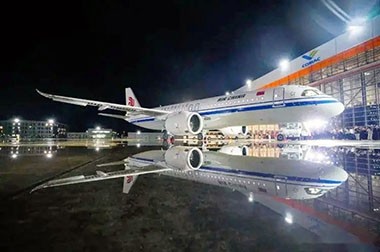What is the difference between 7075-T6 and 7075 T651?
7075-T6 and 7075-T651 are both high-strength temper grades of 7075 aluminum alloy, but their main differences lie in the heat treatment process and the resulting mechanical and manufacturing properties.
7075-T6 is produced through solution heat treatment, quenching, and artificial aging, resulting in high strength with some residual stress.
7075-T651 undergoes the same basic heat treatment but includes an additional stretching step to relieve these stresses, improving dimensional stability and machinability. Its strength is very close to that of 7075-T6, but it has slightly lower ductility.
Main Differences Between 7075-T6 and 7075-T651
| Factor | 7075-T6 | 7075-T651 |
| Heat Treatment | Solution + aging | Solution + stretching + aging |
| Strength | High | Slightly higher |
| Machining Stability | Lower | Higher (stress-relieved) |
| Ductility | Higher (~7.9%) | Lower (~5.6%) |
| SCC Resistance | Moderate | Improved |
| Cost | Lower | Higher (additional processing) |
7075 T6 vs 7075 T651 Heat Treatment Process
- 7075-T6: This temper is produced by subjecting the alloy to solution heat treatment, rapid quenching, and then artificial aging. This process maximizes strength by creating a fine dispersion of precipitates.
- 7075-T651: In addition to the T6 heat treatment steps, the T651 temper undergoes a controlled stretching (or cold working) process after quenching. This additional step relieves internal (residual) stresses, enhancing dimensional stability and reducing the likelihood of deformation during machining and further processing.
7075 T6 vs 7075 T651 Mechanical Properties
- Both tempers have extremely high strength, but the stress-relief stretching in T651 typically results in slightly higher yield strength and tensile strength compared to T6, although the difference is usually minimal.
- Compared to T6, T651 generally has lower elongation (ductility), which is a common trade-off when residual stresses are reduced.
| Property | 7075-T6 | 7075-T651 |
| Tensile Strength | 560–580 MPa | 570–580 MPa |
| Yield Strength | 480 MPa | 500–510 MPa |
| Elongation at Break | ~7.9% | ~5.6% |
| Fatigue Strength | ~160 MPa | ~180 MPa |
| Hardness | Comparable | Slightly higher |
Key Insight: T651 offers marginally higher tensile/yield strength but lower ductility due to stress-relieving. Fatigue resistance is better in T651 due to reduced internal stresses.
7075 T6 vs 7075 T651 Dimensional Stability and Machinability
- 7075-T651: The additional stretching step significantly enhances dimensional stability. This means parts made from T651 are less likely to warp or deform during machining and subsequent manufacturing processes.
- 7075-T6: While extremely strong, T6 may retain more internal stress, which can lead to slight deformation during machining.
| Temper | Characteristics Description |
| 7075-T6 | Prone to deformation during machining because residual stresses can cause warping when material is removed. |
| 7075-T651 | The stretching process minimizes internal stress, making it more stable during machining. This is crucial for precision components such as aerospace or automotive fixtures. |
7075 T6 vs 7075 T651 Stress Corrosion Cracking (SCC) Resistance
- 7075-T6: Higher residual stress increases the likelihood of SCC in corrosive environments.
- 7075-T651: Stress relief reduces residual stress, improving SCC resistance. However, the corrosion resistance of both tempers is lower compared to alloys like 6061.
7075 T6 vs 7075 T651 Applications
- T6 is preferred in applications where maximum strength is essential and minor deformation is acceptable.
- T651 is ideal for high-precision and aerospace applications where dimensional stability and machinability are crucial, despite its slightly higher cost and lower ductility.
| Temper | Application Scenarios |
| 7075-T6 | Used in applications requiring high strength but with lower machining complexity (e.g., aircraft bulkheads, bicycle frames). |
| 7075-T651 | Suitable for high-stress, precision-machined parts (e.g., aerospace structural components, military equipment, robotics) where dimensional stability is critical. |




